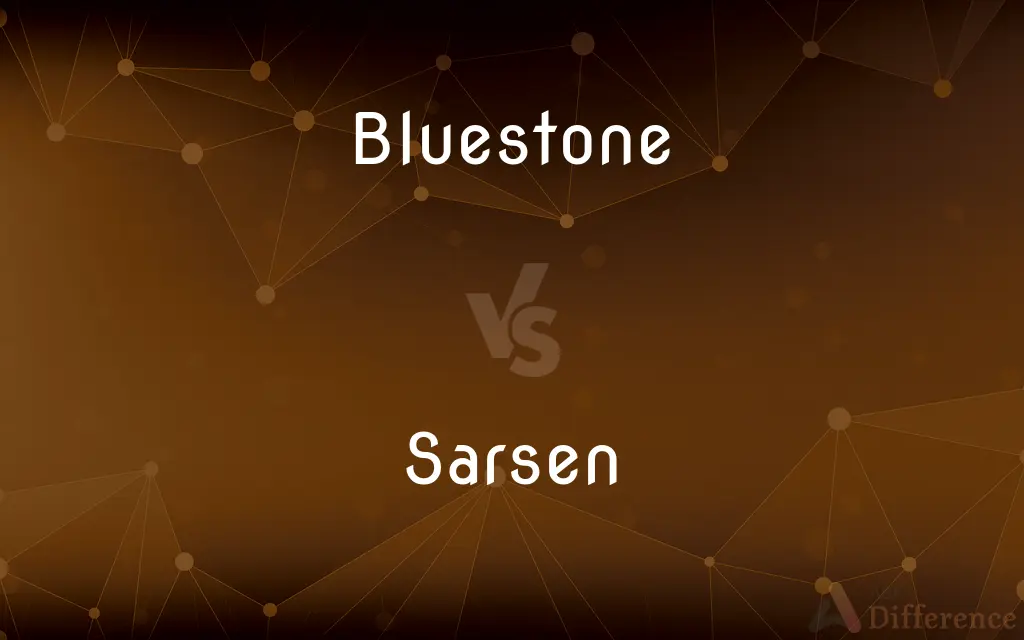Bluestone vs. Sarsen — What's the Difference?

Difference Between Bluestone and Sarsen
ADVERTISEMENT
Compare with Definitions
Bluestone
Bluestone is a cultural or commercial name for a number of dimension or building stone varieties, including:
Sarsen
Sarsen stones are sandstone blocks found in quantity in the United Kingdom on Salisbury Plain and the Marlborough Downs in Wiltshire; in Kent; and in smaller quantities in Berkshire, Essex, Oxfordshire, Dorset, and Hampshire. They are the post-glacial remains of a cap of Cenozoic silcrete that once covered much of southern England – a dense, hard rock created from sand bound by a silica cement, making it a kind of silicified sandstone.
Bluestone
Any of various bluish or grey building stones.
Sarsen
One of several large masses of silicified sandstone or conglomerate found on or near the ground surface in England and Brittany and believed to be the erosional remains of a sedimentary bed deposited during the Tertiary Period. These masses were used by Neolithic peoples as monoliths.
Bluestone
A bluish-gray sandstone used for paving and building.
ADVERTISEMENT
Sarsen
Any of various blocks of sandstone found in various locations in southern England.
Bluestone
A stone similar to this kind of sandstone.
Sarsen
One of the large sandstone blocks scattered over the English chalk downs; - called also sarsen stone, and Druid stone.
Bluestone
Any of several bluish grey varieties of stone used for construction:
Bluestone
(UK) A form of dolerite which appears blue when wet or freshly broken.
Bluestone
(UK) Any of the several (massive) kinds of non-local stone (particularly dolerite) used to construct Stonehenge.
Bluestone
A feldspathic sandstone found in the US and Canada.
Bluestone
(US) A form of limestone found in the Shenandoah Valley and some other places.
Bluestone
A bluish grey basalt or olivine basalt.
Bluestone
Slate, such as comes from quarries in or near Adelaide.
Bluestone
Either of two related copper- and sulfur-based bright blue stones:
Bluestone
Copper(II) sulfate, CuSO4(H2O)x where x is 0-5, used as a coloring agent in glass-making and pottery and for other purposes.
Bluestone
Chalcanthite, a water-soluble sulfate mineral, CuSO4·5H2O.
Bluestone
Lapis lazuli, or its core constituent, lazurite.
Bluestone
Blue vitriol.
Bluestone
A grayish blue building stone, as that commonly used in the eastern United States.
Bluestone
Bluish-gray sandstone used for paving and building
Share Your Discovery

Previous Comparison
Model vs. Picture
Next Comparison
Fiddle vs. Piddle














































